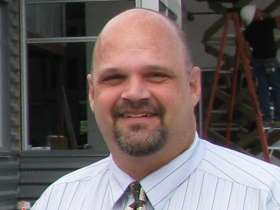
April 2015 by Scott Trebatoski
Audience: Executive Leadership, Shelter/Rescue Staff & Volunteers, Veterinary Team
Video Length:
What can animal shelters do about healthy unowned cats in their community? One new concept increasingly gaining ground is that, as long as the cats are thriving, the most compassionate, lifesaving approach is to sterilize them, vaccinate them, ear-tip them and return them where they were found.
This approach grew out of community-based trap-neuter-return (TNR) programs, which have been in use for decades. Today, some shelters are altering the cats themselves, while others transfer them to a spay/neuter clinic.
"Return to field is the growing best practice to deal with community cats that enter the shelter and cannot be adopted due to temperament," says Scott Trebatoski, Director of the Pet Resources Division of Hillsborough County, FL.
Join Maddie's Fund® as Scott Trebatoski shares real-world experiences and answers questions about how to make it work in your community in Return to Field: Animal Shelters and a New Approach to Healthy Unowned Cats.
This webcast is the third in a five-part series on the key initiatives of the Million Cat Challenge. Its focus will be on the benefits in both increasing lifesaving and reducing long-term animal control and sheltering costs. Some surprising real life examples with dramatic results will be highlighted along with key elements to implementation and convincing stakeholders, including legislators, of the benefits of adopting this new approach to handling this population of cats.
Return to Field: Animal Shelters and a New Approach to Healthy Unowned Cats will be of interest to anyone who wants to save animals' lives, from individual advocates to lawmakers as well as shelter and rescue group staff, volunteers and board members.
This webcast is part of an ongoing series of educational programs from Maddie's Institute, a program of Maddie's Fund®, the nation's leading funder of shelter medicine education. Maddie's Institute brings cutting edge shelter medicine information from universities and animal welfare leaders to shelter veterinarians, managers and staff as well as private practice veterinarians, rescue groups and community members to increase the lifesaving of homeless dogs and cats community-wide.
This course has been pre-approved for Certified Animal Welfare Administrator continuing education credits.

Scott Trebatoski
Scott Trebatoski came to animal control/welfare from a non-traditional path as a private sector businessman and labor/employee relations senior manager. In 2001, he took on the challenge of an animal shelter, leaving after achieving recognition as Florida Animal Control Association Outstanding Agency of the Year for two consecutive years.
In 2008, he moved to Jacksonville, and in collaboration with community partners, pioneered the first full-scale return to field from a government shelter. In Jacksonville, literally overnight, they went from no Shelter Neuter Return or Trap Neuter Return, to all trapped cats being returned to the field - more than 5,000 cats in the first full year of the program.
In 2014, he moved on to new challenges in Hillsborough County (Tampa) after being named Florida Animal Control Association Outstanding Agency of the Year for three consecutive years with the City of Jacksonville. In the new administration's first 11 months he raised the live release rate from 45% to 76% in Hillsborough County, and the most recent months have seen live release rates between 83% - 89%.
Trebatoski has done consulting in numerous communities in Florida and throughout the Southeast and Midwestern United States including Louisiana, Georgia, Alabama, Mississippi, Indiana and Ohio. He has presented and helped developed RTF programs, as well as assisted with assessment and recommendations on other government animal control/sheltering programs, working with private foundations and government organizations. He was keynote speaker at the University of Georgia's Shelter Veterinary Conference in January 2014.